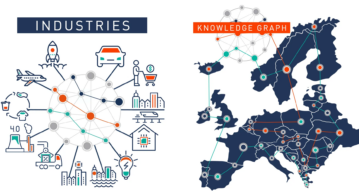Dispersing the No-Code Myths with Unqork’s Enterprise-Grade Platform
Talk to most IT professionals, especially developers, about low-code or no-code development, and the verdict tends to be either one of derision or a grudging acceptance that low-code has its uses in automating between point products. There are good arguments that low-code platforms can empower line-of-business owners in specific use cases, but as tools for developing enterprise-grade, secure applications, 99% of platforms fall short of their marketing hype.
However, it’s interesting to hear about Unqork, a pure no-code development platform (in fact, it’s fastidiously no-code) that large organizations use to produce complex, customer-facing applications. The platform is used in traditionally highly sensitive environments like financial institutions and in the public sector — two areas where the stakes for data security and service resilience are set very high.
The User Profile
The Unqork documentation available online makes no bones about the fact that the platform is a tool for developers. Its graphical user interface uses recognizable BMPN (business process management notation) so Change Managers or Operations professionals would feel at home. But unlike some no-code solutions, Unqork is not designed to help non-IT functions somehow sidestep IT’s involvement: the interface is designed to be understood broadly in business contexts so that it can be a base for collaboration.
A great deal of the complexity (and vocabulary) that are the field of expertise of the developer are abstracted by the platform, but the developer’s mindset and way of thinking are necessary, even in this highly graphically focused interface. The IT pro’s role is also required, especially in edge cases — like when mapping data flows in and out of bespoke, legacy stack, for example. Much of the minutiae is managed by Unqork’s lower-level layers, with the grunt work of parsing data, sanity-checking, and field mappings are handled silently. In this respect, Unqork is realistic in how it expects to be used and by whom, but it’s neither exclusively for DevOps nor is it a magic wand that will let the Marketing intern create transformational business applications in a couple of hours.
The Separation
It’s a fairly simple matter to build complex business workflows in Unqork, but users need to realize that the platform separates processes from business logic and from the eventual end-users’ interface.
At a high level, an application may permit customers to apply for a personal loan (to grab an example at random). As a progression of logic, the user enters their personal details, scans a form of ID, and is given a verdict on whether they have been accepted for a loan. This logical series of steps are broken down into a series of event- or automation-driven stages: connecting with eKYC for ID verification, credit-rating agency interaction, decisions on whether a human agent needs to be involved, and so on. Each step is represented as a graphical unit, and these can be placed literally in different “streams,” where a stream could be an actor (customer, third-party agency, company representative), or automated events like data archiving or information pushed into CRM or ERP systems, for example.

The degrees of separation in the Unqork platform allow distinct application areas to be debugged in isolation or be handed to a specific team to finesse. From the same interface, line-of-business owners, stakeholders, and IT personnel can also zoom out to get the overall “story” of the processes as a logical map. That means whatever the underlying complexity of what is being developed, the users’ experience is always visible, so can remain high in teams’ consciousness: a few clicks and the platform models the different journeys through the application in real-time, so developers can test how intuitive or otherwise the end-user (or any other role) will find their experience.
(Not) Out with the old
The eventual effect of the Unqork solution is one of allowing organizations to solve some of the big issues that have dogged software development for businesses since the early days of computing:
– Letting user experience expectations dictate user interface (not what internal business logic dictates),
– Managed integrations between applications and resources that are immune from breakage when individual systems update,
– Keeping legacy systems in practical everyday use, thus extending their ROI, with the complexity associated with their use abstracted away from new development activity.
The Unqork platform wears the label, but not the reputation of no-code development. Instead of seeming to create an existential threat to DevOps, it is better thought of as a faster, more efficient, and clearer way to develop applications and services. Its methodology means it is understandable by non-IT professionals and, therefore, makes it a powerful platform where enterprise-wide involvement leads not to mission creep but to a refinement of the applications it helps create. The speed at which it can pull together the complex threads that are the reality of enterprise-grade apps and services is remarkable. Its capabilities are perfect for organizations that need to develop with agility, resilience, and security — even in highly sensitive environments.
To learn more about Unqork, we suggest exploring the platform’s video webinars & showcases, and registering for a personal demonstration of this highly able way to spin up applications.









